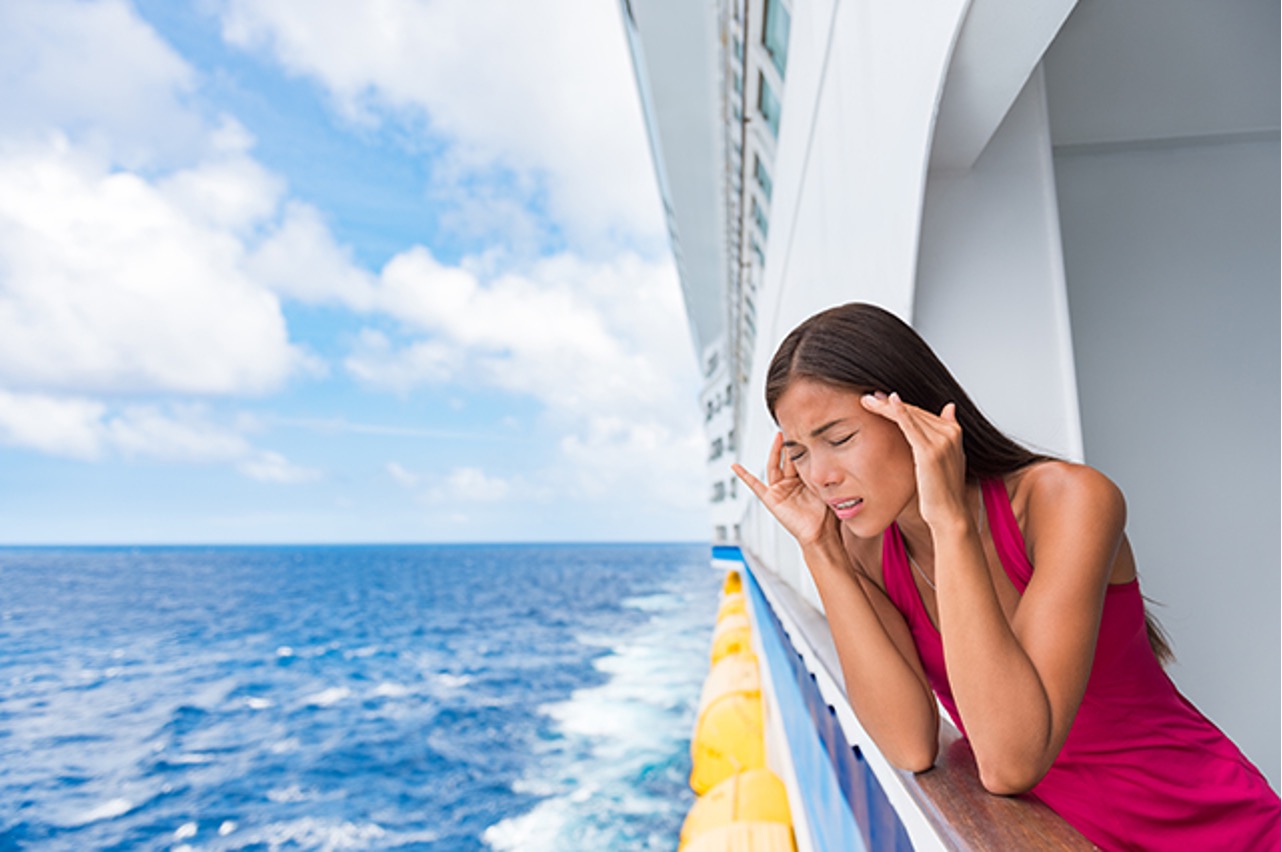These simple tips can help you avoid getting sick on a cruise.

You want your cruise vacation to be perfect, with no scratchy throat or headache to drag you down. Most travelers revel in the journey without encountering sniffles, queasiness, or tummy troubles. But there’s always room for extra precaution.
Common-sense practices are your allies in the quest for well-being, even as the allure of rum drinks by the poolside or whirlwind waterslides beckon. Prioritize a few easy measures to steer clear of any setbacks that might threaten to mar your vacation bliss. The lesson from the COVID-19 era is clear: germs can spread swiftly.
Here are nine suggestions to help you avoid getting sick on your cruise vacation.
Wash Your Hands
Even before the pandemic, cruise lines emphasized handwashing to stave off the transmission of viruses like the notorious norovirus. Royal Caribbean has a cartoon video with a catchy tune with a catchy tune to encourage hand-washing. Norwegian Cruise Line positions singing crew members near the buffet to remind people to stop by the sinks or use the hand sanitizer stations. Don’t forget this basic step in your quest for wellness. While soap, water, and a good scrub for 20 seconds are ideal, having a small bottle of hand sanitizer can be handy. As shared surfaces abound, from handrails to elevator buttons, sanitizing your hands frequently is a savvy move.
Be Vigilant About Vaccines
Though cruise ships don’t mandate COVID-19 vaccines anymore, don’t ignore other preventable illnesses. Before your journey, make sure routine vaccinations are up to date. Consult your doctor to ensure you’re covered against ailments like the flu or tetanus. For extensive trips or exotic destinations, a travel medicine expert can guide you on other necessary precautions, like safeguarding against yellow fever or malaria. You can find recommendations and travel health alerts on the Centers for Disease Control and Prevention‘s website.
Hydration is Key
You’ll want to drink lots of water to stay hydrated, especially when visiting a tropical or otherwise hot locale. Lightheadedness and headaches caused by dehydration are common issues with cruise passengers. The water from the faucet in your cruise ship cabin will be potable, though it may come out of the tap lukewarm. Many cruisers prefer to drink bottled water, which you can buy on board. Water is also included in both alcoholic and nonalcoholic beverage packages available for purchase. The cheaper option is to pack a reusable water bottle to fill up at the water taps at the buffet. There may be signs telling you not to fill your bottle, but you can get around these by filling glasses and dumping them into your bottle at your table.
When you explore on shore, you should use caution in terms of both the local drinking water and the ice in any drinks you order. Locals may be used to any bacteria in the water, but your stomach may decide to react. To check water quality, consult the State Department’s country-specific notices, where you can type in the country you are visiting and click on the “Health” section for details.
Know Your Limits
It’s not uncommon on a hot day to see people attempt a strenuous uphill hike and end up needing medical attention. Assess your physical abilities wisely when selecting shore excursions. Be mindful of your capabilities to ensure an enjoyable experience without overexertion. Don’t let brochures tempt you into activities beyond your capacity. Read the excursion descriptions, and ask questions if you need to before committing to strenuous activities.
Embrace Rest
Cruise ships are abuzz day and night, offering a plethora of activities. However, allow yourself time to rest. Skipping sleep for excessive merriment can lead to exhaustion. If noise is an issue, consider earplugs or a white noise machine. Remember, relaxation rejuvenates both body and mind.
Keep It Clean
If you are flying to your cruise vacation, pack wipes in your carry-on so you can wipe down your airline seat, tray table, touch TV screen, the controls for your reading light and air vent (which you should keep open to disperse the air you are breathing), and any other surfaces someone may touch.
Once in your cabin, you’re wise to do a similar wipe-down. Yes, it all may seem a bit paranoid; housekeeping crew members clean every cabin between guests. Still, you don’t want to take a chance anything was missed. Germs spread.
Watch the Booze
You’re on vacation, and it’s your time to let loose. Those fancy cocktails look refreshing, and that all-inclusive drinks package you purchased allows you to imbibe more than a dozen drinks a day. But can you really handle all that without a headache, stomach upset, or other nasty hangover symptoms?
If you’re planning to drink on board, stay hydrated. Don’t worry about missing out on prepaid package savings; most beverage packages include bottled water and nonalcoholic drinks, too. Try to alternate alcoholic with nonalcoholic beverages to stave off hangovers.
Pack Seasickness Remedies
On larger ships in calm waters such as the Caribbean and Alaska, seasickness is rare. But for peace of mind, consider packing over-the-counter seasickness medication. The most common over-the-counter remedies are dimenhydrinate (Dramamine) and meclizine (Bonine). Both come in non-drowsy versions. Take the medications preemptively; don’t wait until you feel a little green. Alternative remedies like ginger or wristbands might also suit your needs.
Wear a Mask
Though masking on cruise ships is now a personal decision, wearing a mask helps ward off spreadable diseases, including the common cold. Wearing a mask helps ward off spreadable diseases, even the common cold. A surgical mask offers some protection; an N95 or KN95 mask offers more. Even if you don’t plan on masking most of the time, keep one on hand for long embarkation lines in the terminal or sitting in crowded theaters.
Twist’s Take: Taking these precautions ups your chances of protecting yourself against falling sick on your cruise vacation.
